Advantages and disadvantages: which heating batteries are better to choose for a private house?
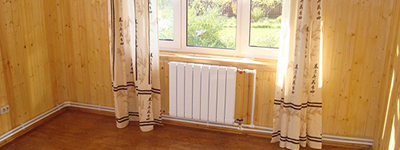
Not only the choice of a heating boiler influences the comfortable temperature in a private house, It is important where the coolant enters and accumulates. The range of modern radiators for heating residential premises is huge.
Content
- How to choose heating radiators for a private house?
- Features of the heating system in a country house
- A lot is not a little
- Five rules of installation
- What characteristics should you look for when making your choice?
- Main indicators of batteries for water heating
- From “cast iron” classics to modern bimetal: what is the best choice?
- Design features
- Useful video
- The right choice
- Comments (1 opinion)
How to choose heating radiators for a private house?
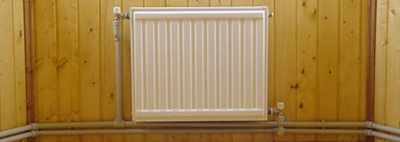
The market offers domestic models, European quality products from leading manufacturers and budget developments from China. It is important to purchase quality radiator at a reasonable price and decent design.
Features of the heating system in a country house
The traditional heating system in cottages and small houses is based on water heating with a lower distribution. It is used natural circulation - a slight slope for the distribution pipes - or forced: with the connection of pumps.
The heating system in a detached house includes a choice of:
- boiler, electric, gas, wood or combined;
- distribution pipes made of various metals or polypropylene;
- heating radiators - storage tanks;
- coolant: ordinary water, purified water or antifreeze.
Autonomy of heating in residential premises implies low pressure in the main pipes. Therefore, when choosing radiators, you you don't have to take into account the working pressure indicator, as is the case with central heating. When choosing, focus on the material, its thermal conductivity, power, service life and price.
A lot is not a little

A common mistake homeowners make is selection of heat exchanger sizes according to the width of the window opening.
Feel free to leave free space by installing the required number of radiator links according to power calculation.
If you overdo it with the number of sections, you will get dry air, stuffiness, or drafts from constantly open windows.
Important! Do not install one unit of many links in a room: long structures take longer to heat up and heat up unevenly. It is wiser to connect two sets with fewer links.
Savings on radiator sections also negatively affects the microclimate living spaces. Cold in the rooms will force you to throw more wood into the firebox or increase the supply of liquid fuel to the boiler. Working of the "water heater" with peak loads will reduce the service life, will lead to excessive consumption of fuel and money. Maintain a balance when choosing radiators.
Five rules of installation
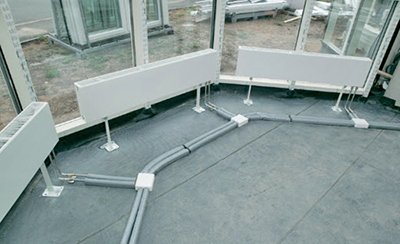
When installing, take into account the correct placement of the batteries and the supply of coolant to them.
- Want to save on energy costs for your boiler? — install a two-pipe heating system.
Unlike the traditional “Leningradka” (single-pipe connection), you can regulate the temperature in each room of a private house.
- Consider the connection point of the links, leaving at least 20 centimeters on the installation side for technological connection.
- Ensure optimal convection of warm air due to the free space at the bottom and top of the autonomous heating batteries.
- Be aware that installing heat exchangers in designer niches and screens leads to a loss of power. heating. Sometimes this meaning exceeds 25%. Compensate for “underheating” by increasing the number of sections.
- Install on heating radiators Mayevsky and ball valves. This will not only bleed the air, but also drain the water from the pipes to clean the system.
What characteristics should you look for when making your choice?
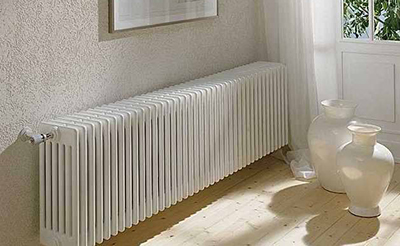
The purpose of heating devices is to transfer heat and distribute it evenly throughout living rooms, creating a comfortable temperature during cold hours of the day – not less than 20–22 °C.
It is difficult for a beginner to navigate the variety of radiators for heating private homes presented on the market. Sometimes an ignorant person pays attention only to on appearance and costThis is a misconception that could cost you dearly.
Experts recommend to be guided first of all technical characteristics elements of the autonomous heating system. You can familiarize yourself with them in the product passport or seek the help of a sales consultant.
Attention! To determine the power of heating devices, take into account the heat loss of living rooms. They must correspond heat loss of a building per unit of time (one hour) depending on the wall material, outside air temperature, climate zone.
Main indicators of batteries for water heating
- Thermal power is measured in kilowatts.
- Dimensions.
- Appearance.
- Service life.
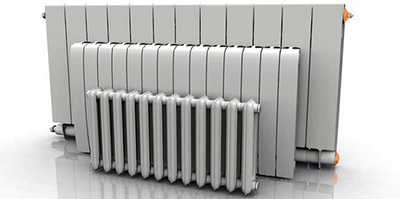
Determine the number of radiators you need based on the thermal power of each unit. Calculate it using the formula: number of square meters multiply by 100 Watts = 1 kW.
For a medium sized room in 20 squares you need to stock up 2 kW. In a corner room, add to this figure 20%.
Look for the thermal power indicators in the technical data sheet of the product, which is indicated in kilowatts. In European models, the coolant consumption is often indicated: liter per minute. In approximate values 1 l/min corresponds to 1 kW.
From “cast iron” classics to modern bimetal: what is the best choice?
To choose the right radiator, pay attention to the material, from which heating devices are made. Not so long ago, only cast iron radiators were available to consumers; other models are also presented on the modern market, differing in technical parameters, appearance, and service life.
Cast iron
The metal has low thermal conductivity, therefore it heats up slowly. To heat the surface of the radiator up to 40–45 °C, the water in the system must comply 70 °CThe advantages include slow cooling of the batteries after the boiler is turned off, resistance to aggressive environments and rust.
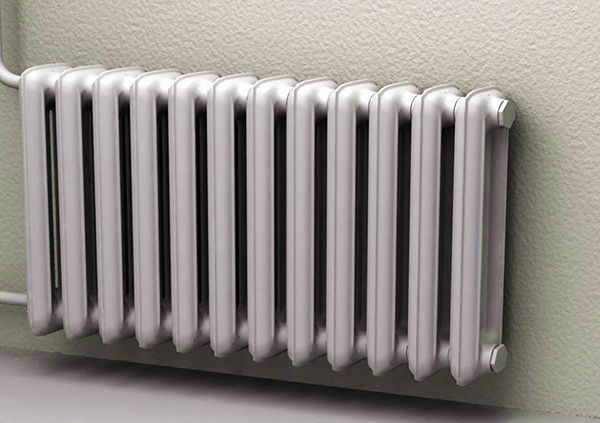
Photo 1. A cast iron radiator with low thermal conductivity and high weight is suitable for country houses.
Such heating devices do not require additional water preparation. Service life — more than 50 years. They can be installed both in spacious cottages and small private houses.
Cast iron radiators have a number of disadvantages related to their heavy weight and appearance. Batteries need to be periodically paint with permanent paints. They are difficult to keep clean. Often, due to their unpresentable appearance, cast iron classics are hidden behind screens, which leads to heat loss.
If you have installed protective screens, add them when calculating the power another 20%.
Aluminum
Aluminum radiators are produced by casting or extrusion with the addition of silicon. Unlike the classics, they are lightweight and easy to install, have good thermal conductivity. Pleasant appearance eliminates protective screens.
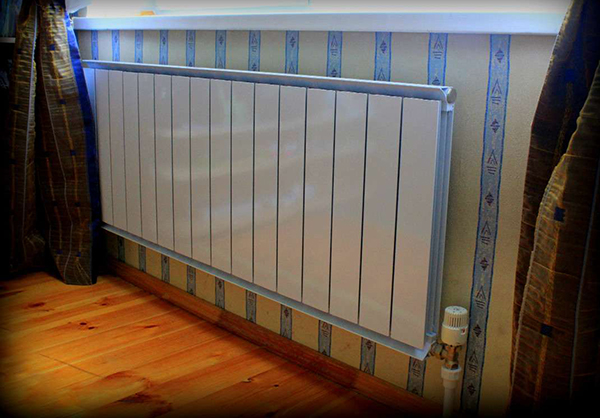
Photo 2. An aluminum radiator in a private house has good thermal conductivity and is easy to install.
This the cheapest heating devices. But they have serious disadvantages: water preparation is necessary. The owner must install cartridges and filters, monitor pH levels. Otherwise, the protection of the inner layer of the devices will be damaged. The joints between the links may leak.
Attention! These radiators cannot be supplied with water through copper pipes - oxidation processes will begin. The product will last less than 15 years, allocated to him by the technical passport.
Steel
Reliable heating radiators with high thermal conductivity are made of steel. Lightweight, easy to install on your own. Unpretentious products at an affordable price are chosen by owners of any type of house building. Attractive appearance, possibility of mounting options: horizontal and vertical, corner design.
The main disadvantage of steel panels is that they are susceptible to mechanical impact. Careless handling of the device reduces the service life from the stated 20 years.
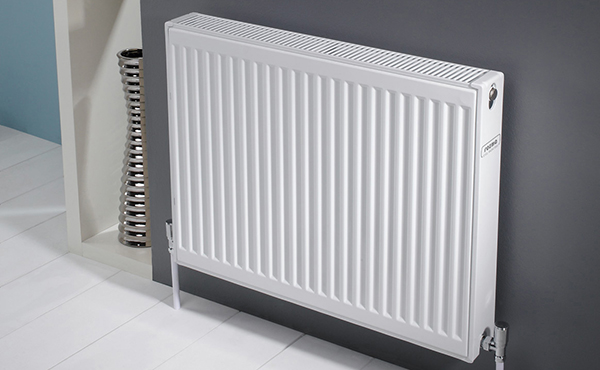
Photo 3. Steel battery with high thermal conductivity, side connection, suitable for any type of house building.
Steel radiators are connected to the heating system from below or from the side. The bottom connection will cost the homeowner more than the side connection. Radiators made of steel must always be filled with water.
Bimetallic
Heat exchangers are manufactured using two types of metal: steel pipes are placed in an aluminum case. The result is a more reliable design than devices from one type of metal. Heats up quickly, transfers heat well. High-strength heat exchanger steel protects the system from corrosion. The radiators are light and aesthetic. They will create a comfortable environment in any type of private home.
On the downside include high price, cracking during operation, since the two metals have different coefficients of thermal expansion.
Reference! Experts advise installing a bleed valve on bimetallic radiators and shut-off valves on pipes. In this case, the service life will be maintained: 25 years old.
Design features
To create comfortable living conditions in a private home, it is necessary to select the design of heating radiators.
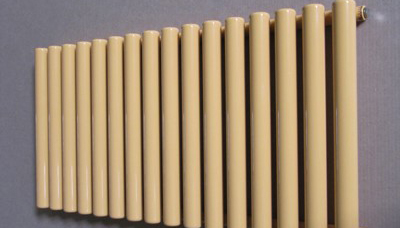
It depends on forms of living spaces, design private house.
Radiators consist of vertical or horizontal tubes, solid plates, which create good convection.
They quickly and thoroughly warm up the room.
Tubular
This type of radiators belongs to the premium segment in terms of service life, up to a quarter of a century, design and price. The thickness of the tubes is selected depending on the size of the room. Installation is possible in rooms with floor-to-ceiling panoramic glazing.
European manufacturers bring low-profile tubular heaters to market height from 15 centimeters. There are angular and curved heat exchangers. The most expensive and durable design is considered to be tubular batteries made of stainless steel. They have only one drawback - high price.
Sectional

Similar sections in such radiators are assembled for a certain power. You can select for any shape and length.
The sections are made from any type of metal used in radiators. This is an economical option with a low cost, allowing you to vary the number of elements and regulate the temperature regime.
The worst thing that awaits the owners is leaks between sections and difficulty in cleaning.
Panel
Radiators are two metal shields, connected by welding. They are made only of steel, have the advantages and disadvantages of this type of metal when in contact with water. The solid surface has a high heat transfer, is easily mounted on any walls, including hard-to-reach places. Unlike sectional devices in solid structures Unable to resize.
Convector
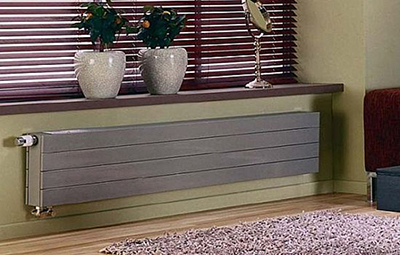
The design of a pipe with plates in a convector radiator ensures constant air circulation indoors.
The body is made of copper or steel pipe, to which low-carbon steel plates are welded. The main advantage of convector radiators is fast heating premises.
Air circulation capable of raising dust, therefore, experts do not recommend equipping water heating with such devices in places where allergy sufferers live. Convectors are ineffective in rooms with high ceilings — more than three meters.
Useful video
Video review of bimetallic and aluminum batteries: characteristics, differences.
The right choice
Knowing the characteristics of the main types of devices for heating a private house, it is easy to make a choice based on these criteria. The variety of design features of radiators, design solutions will make a touch of elegance in the arrangement of living spaces. Manufacturers have improved the appearance of cast iron radiators, which do not require painting at home. And now the classics do not cause rejection in appearance.







Comments